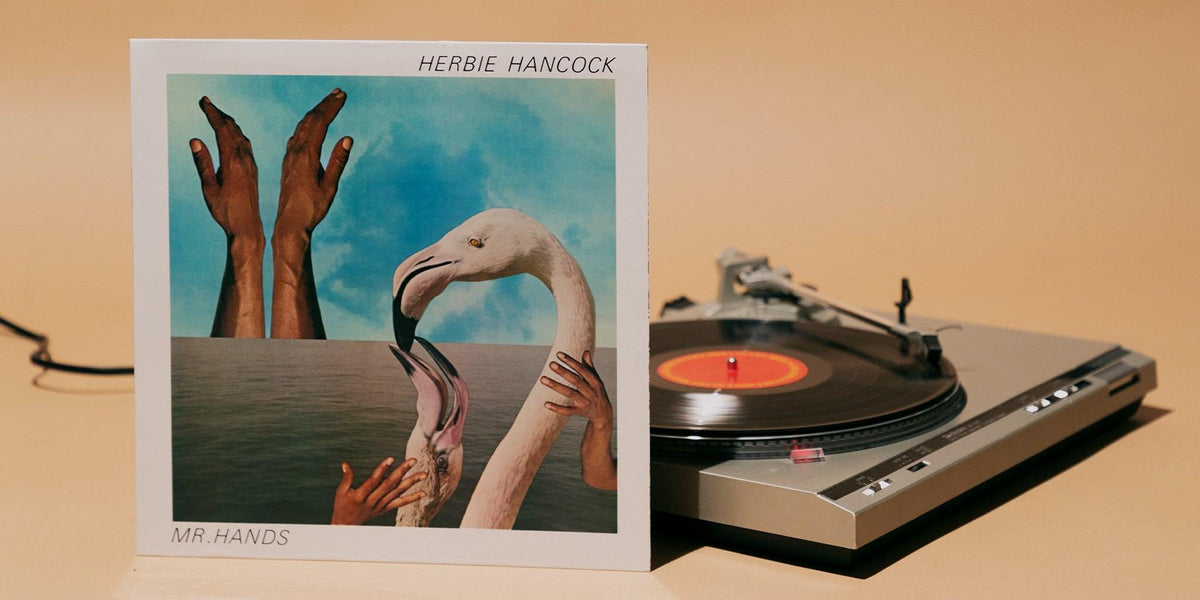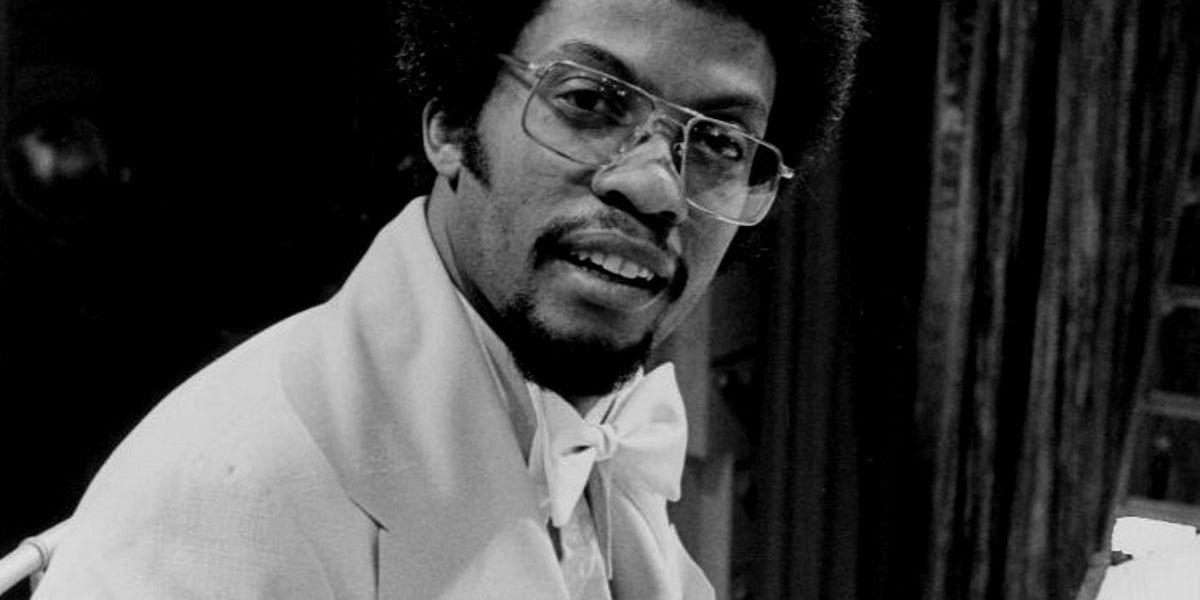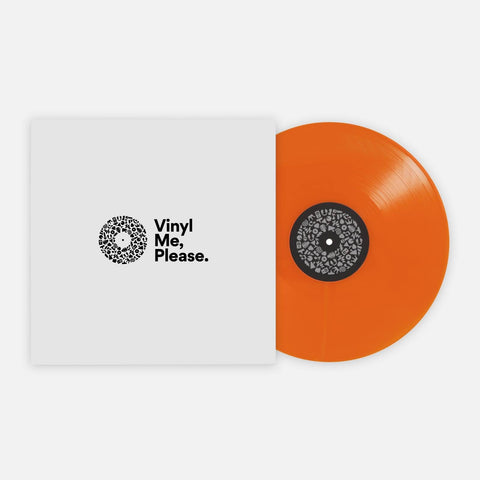Herbie Hancock was always meant to be a star. Sure that’s easy to say now, but he played Mozart’s D Major Piano Concerto—with the Chicago Symphony Orchestra—when he was just 11. He was a prodigy, partly by his mother’s doing. She “wanted to make sure that her children had ‘culture,’” Hancock once told the National Endowment for the Arts. “For her, culture in terms of music was classical music, not jazz, not rhythm-and-blues.” He became interested in jazz at the age of 14 when he saw a classmate do things on the piano he didn’t think was possible. “He improvised on my instrument,” Hancock said of the experience. “Piano was my instrument [and I saw] a guy my age doing something that I couldn’t do.” A curious soul, he started practicing with the boy, who introduced him to the music of British pianist George Shearing. Hancock was hooked. He went home and dusted off some old Shearing 78s: “I put them on and I heard that sound that my friend at school was playing. So that was the beginning.”
Six years later, Hancock started playing jam sessions around Chicago during summer breaks from Grinnell College in Iowa. That winter, he got the gig of a lifetime—to play piano with the esteemed jazz trumpeter Donald Byrd and baritone saxophonist Pepper Adams as part of their quintet. It was supposed to be for a quick weekend gig in Milwaukee, but they liked Hancock’s contribution so much that they hired him full-time. Suddenly, the young pianist had a chance to move to New York City, which had been a dream of his. But there was one more hurdle to leap. “You have to ask my mother,” Hancock told the NEA, reciting his talk with Byrd. She approved, and by 1961, Hancock was living in the Big Apple with an active band, playing venues like The Five Spot . Then Blue Note Records signed him to a solo deal; his first album, Takin’ Off, was released a year later. For some musicians, this would be the pinnacle—to work with a legend like Byrd and have a record deal with the most vaunted jazz label of all-time. Yet in 1963, Miles Davis came calling; he invited Hancock to his house, then to a Manhattan recording studio as an official member of his quintet. The pianist worked in the trumpeter’s band for the next six years.
During this time, Hancock broadened his own sound—from the hard bop of his debut record, to the subdued beauty of 1968’s Speak Like A Child. By the end of the decade, he started mixing funk into his music, a move that pushed Hancock to bigger audiences and made him one of the most celebrated artists in the world. With almost 60 years in the music industry and a whopping 55 albums to his credit, Hancock is an undisputed icon who’s still exploring new sounds. Vinyl Me, Please is releasing a 40th-anniversary reissue of his 1980 album, Mr. Hands. To commemorate this, here are his 10 essential LPs.

A year after joining Donald Byrd’s quintet and playing different venues around New York City, Hancock created his own quintet and released his debut solo album, Takin’ Off, which featured Freddie Hubbard on trumpet, Dexter Gordon on tenor saxophone, Butch Warren on bass, and Billy Higgins on drums. Though Takin’ Off feels tame compared with his subsequent work, it showed that Hancock had what it took to gracefully lead a band, sometimes taking a backseat to let others shine. A mix of Afro-Cuban rhythm and gospel, “Watermelon Man” is a sleek, horn-driven composition focused on a tight groove and standout solos (Hubbard has a star turn here). Then there’s “Driftin’,” where Hancock expands into a blues-driven piano solo, yet it feels festive when played over Higgins’ steady percussion. When the ballad “Alone and I” comes around, the pace slows to a crawl, concluding the album on a sensual note.

Inspired by the mystery of open water, Maiden Voyage follows the journey of a submarine and the ocean life it encounters along the way. But it isn’t just about a plodding giant tube, the music also unpacks “the graceful beauty of the playful dolphins, the constant struggle for survival of even the tiniest sea creatures, and the awesome destructive power of the hurricane,” Hancock wrote in the album’s liner notes. Based on the premise, one would think it’s an ambient record made for resting, but the music here is more adventurous than that of Takin’ Off. There’s “The Eye of the Hurricane,” an edgy collection of blazing solos from Hancock, trumpeter Hubbard, and tenor saxophonist George Coleman. Then there’s “Survival of the Fittest,” the best song on this set: Around sporadic drum solos, Hancock pulls light and dark chords from his piano, giving the track its robust intensity.

After Maiden Voyage, Hancock was busy working with Miles Davis as a member of his quintet and hadn’t released a solo album in three years. Speak Like a Child was his follow-up to Maiden Voyage, and the pianist’s first foray into music beyond jazz. Before Miles, Hancock was only into that genre. During their time together, the trumpeter introduced him to rock and funk. “I began to notice Miles would have album jackets of Jimi Hendrix or maybe the [Rolling] Stones or the Beatles,” Hancock once recalled. As a result, he wondered if there was music between jazz and rock, something with “elements of both but retains and builds on its own identity.” Hancock was more interested in sound than structure on this album. And while mainstream music had aggressively reflected the era’s social unrest, he took the opposite approach, releasing an album meant to emit peace and love.

By 1969, Hancock had begun to break away from jazz. The roots were still there, but he broadened his music beyond the traditional aspects of his previous work. His art started showing up elsewhere: “Maiden Voyage” soundtracked a cologne commercial, and he scored the music for director Michelangelo Antonioni’s 1966 mystery-thriller film, Blow-Up. In 1969, Hancock recorded some music for Bill Cosby’s Fat Albert cartoon, and the resulting LP marked the pianist’s first jazz-funk release, a path he’d continue for the next decade. Given Hancock’s track record, Fat Albert Rotunda was a risk, but the executives at Warner Brothers loved it, and that gave him the creative freedom to create Mwandishi.

By the early 1970s, Hancock turned his attention to Africa—the rhythms, the people, and the connection his band had with it. He was given the name Mwandishi—which means “creator” in Swahili. That awakened something. The subsequent LP, Mwandishi, seethed with quiet intensity, and its stacked drums and textured electronic rhythm were meant as a supportive salute to the Civil Rights Movement (“Ostinato (Suite for Angela)” was dedicated to activist Angela Davis). The album has aged well, but it was a commercial failure upon its release in 1971. The naysayers were wrong; it’s easily one of his best albums.

In mid-1973, Hancock moved from Warner Brothers Records to Columbia Records. Aside from the hit Fat Albert Rotunda, the Warner years were marked with declining sales and low-paying gigs. Sextant was the first album Hancock recorded for his new label, and the last one he’d record with the Mwandishi Band. History says that the Mwandishi era didn’t work, but listening to Sextant, it’s tough to comprehend why this didn’t sell well, either. Listen to the cosmic funk of “Rain Dance” and the stoned funk of “Hidden Shadows.” Then there was “Hornets,” the album’s expansive 19-minute centerpiece. It felt like a spacey dance gem recorded somewhere on Mars. Perhaps it was a little too out there for Hancock’s fan base, but given today’s resurgence of sonically challenging art, the album is an unheralded cornerstone in black music. Following the release of Sextant, Hancock broke up the Mwandishi Band and moved to Los Angeles with his wife and young daughter. He formed a new band and recorded an album that would change his world forever.

When people think of Herbie Hancock, they think of Head Hunters; it’s easily the most celebrated album in his catalog and one of the most esteemed records in music history. As the story goes, Hancock and the Mwandishi Band were booked to headline a week of 16 shows at the Troubadour club in Los Angeles. The opening act was a newly-signed trio called The Pointer Sisters, and they gave such a stellar performance that the crowd stood, applauded and wanted them to keep performing. Then Hancock’s band came out, and after a while, some people started to leave. Hancock created a new band, and after a few gigs around L.A. and the Bay Area, they went in to record Head Hunters. Influenced by the raw funk of Sly and The Family Stone, Hancock wanted to create music in that same vein, something a little less heady and more accessible to wider groups of people. “I knew I had to take the idea seriously,” he once said in 1996. “Would I like to have a funky band that played the kind of music Sly or someone like that was playing? My response was, ‘Actually, yes.’” Head Hunters was a creative tour de force. The opening song, “Chameleon,” became a Top 40 hit. This version of “Watermelon Man” was sampled by hip-hop and reggae artists. And “Sly,” the album’s longest track, was a shapeshifting funk breakdown dedicated to Sly Stone. Hancock’s musical life would never be the same.

Hancock’s previous album, Monster, was a dance record through and through: No heady jazz or funk hybrids were found there. After a series of disco-oriented LPs that just kinda came and went, Hancock’s Mr. Hands revisited the serenity of his earlier work without rehashing the likes of Maiden Voyage or Speak Like a Child. His 30th album was essentially a smooth jazz LP made for Quiet Storm radio. From the Afro-Caribbean sound of “Calypso” to the frenetic “Shiftless Shuffle,” Mr. Hands foreshadowed another seismic shift for Hancock; his next big move placed him squarely in the middle of a nascent genre called hip-hop.

One word: “Rockit.” Future Shock sold more than 1.5 million units, largely because of this song and video, which won five MTV Video Awards in 1984. While the track was hailed as a breakthrough in the early years of hip-hop, it confused jazz heads—who typically hold the genre in the highest esteem and consider everything else as second-tier. But Hancock wouldn’t be constrained by manmade perceptions, and Future Shock—with its drum machines and record scratches—was a complete step away from anything he’d recorded ever, proving yet again that he was willing to shift course, even if it alienated listeners.

Joni Mitchell has been labeled a folk singer, even though she’d recorded with jazz musicians for the previous 30 years. Hancock could understand this type of labeling: While he was still considered a jazz pianist, he hadn’t released a full-on jazz record since the ‘90s. The two were kindred spirits, and on River: The Joni Letters, Hancock convened a small group of like-minded musicians—singers Norah Jones, Corinne Bailey Rae, Tina Turner, and Mitchell herself—to perform reworked versions of Mitchell’s work, paying homage to her grand artistry. In 2008, it won the Grammy Award for Album of the Year.
Marcus J. Moore is a New York-based music journalist who’s covered jazz, soul and hip-hop at The New York Times, The Washington Post, NPR, The Nation, Entertainment Weekly, Rolling Stone, Billboard, Pitchfork and elsewhere. From 2016 to 2018, he worked as a senior editor at Bandcamp Daily, where he gave an editorial voice to rising indie musicians. His first book, The Butterfly Effect: How Kendrick Lamar Ignited the Soul of Black America, was published via Atria Books (an imprint of Simon & Schuster) and detailed the Pulitzer Prize-winning rapper’s rise to superstardom.
Related Articles
Join the Club!
Join Now, Starting at $36Pages








